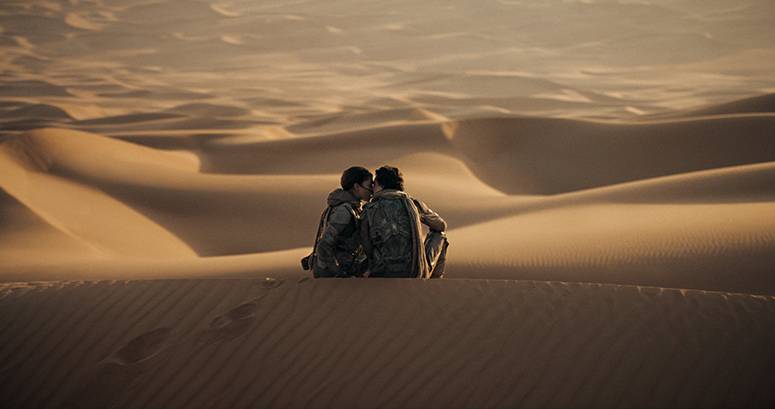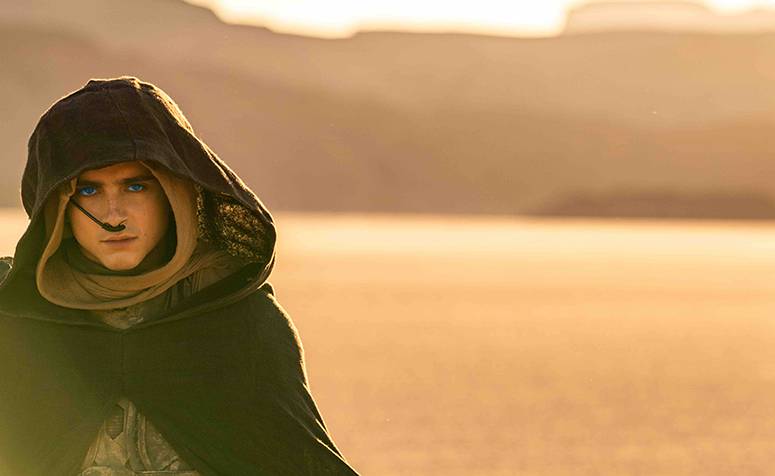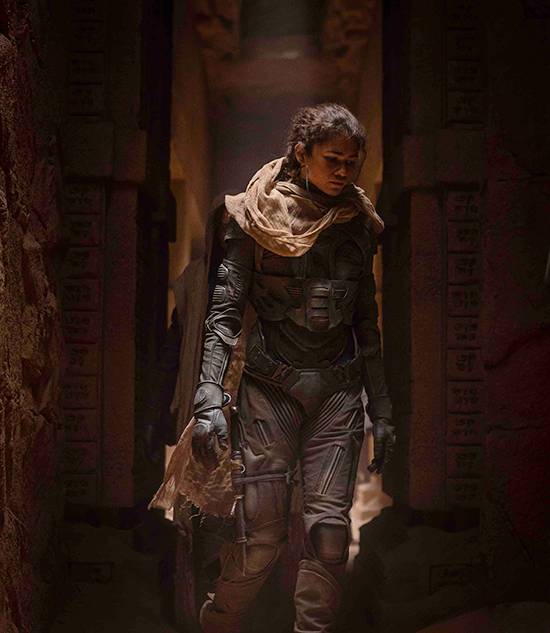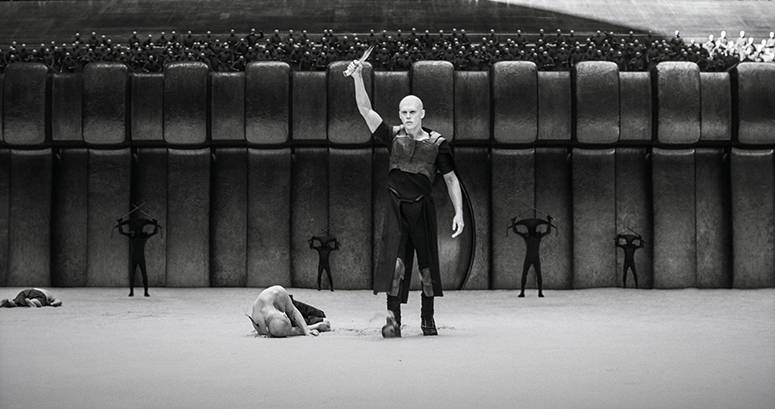A visionary director rises to the level of visionary material in ’Dune Part 2’
Some books really are unfilmable. But among the fantasy and sci-fi classics deemed so, perhaps only Tolkien’s Lord of the Rings trilogy and Frank Herbert’s Dune have survived navigation to the screen. Inspired by Herbert’s experiences with encroaching Midwestern sand dunes, a bit of Lawrence of Arabia, along with his contact with Native American tribes and some liberal experimentation with psilocybin (magic mushrooms) in the early ‘60s, Dune arrived richly layered and seemingly impenetrable to readers in 1965. Yet it became a cult classic, and has lured generations with its tale of interplanetary feudal systems, wars, subjugation, and power.
In the hands of Denis Villeneuve, you can add a high quotient of young love and angst as well: part of the success of his 2021 adaptation of Dune ($404 million at the box office for Part One) has to rest on the teaming of heartthrob Timothée Chalamet as noble scion Paul Atreides and model/superstar Zendaya as Fremen fighter Chani. The relationship is foregrounded in a way that satisfies the need for box-office glamour, and while it perhaps wasn’t so central in the Herbert novel, it never threatens to swamp or overwhelm the key events of Dune: Part Two. It’s just there, existing, growing—perhaps getting in the way of Paul’s prophecy—and eventually breaking hearts.

It takes a visionary to film a visionary work of fiction, and the path to Villeneuve’s Dune has had some memorable misfires. Chilean cult director Alejandro Jodorowsky was the first, gathering money and elaborate designs in the early ‘70s to film what would have been a mind-blowing attempt, before studios pulled the plug (we learn from the documentary Jodorowsky’s Dune that some of his set designs, created by everyone from Salvador Dali to H.R. Giger, later resurfaced in sci-fi epics from the ‘70s and ‘80s, like Star Wars, Alien, Raiders of the Lost Ark, and The Terminator). Next came David Lynch, not the perfect fit to film the epic with Kyle MacLachlan as Paul. It was a turkey, though parts of it still look very cool.

Filmed largely in Abu Dhabi and Jordan, Dune: Part Two looks sensational on the IMAX screen for which it was filmed. Part One tracks the migration of Paul and his pregnant mother, Lady Jessica (Rebecca Ferguson), to the planet Arrakis, and spends most of its two-plus hours laying out the palace intrigues and power plays behind the feudal wars; it was perhaps more about landscaping and world-building than plot development. Part Two brings it all home, developing Paul’s rise as a prophet in the eyes of Stilgar (Javier Bardem), the biggest fanboy among the Fremen tribe. Chani sees through it all, of course: she’s dismissive of cults and prophecies; the most “woke” among the Fremen desert tribe, she sees that promised “messiahs” are meant to keep people in thrall, waiting around for centuries, rather than taking matters into their own hands.

Paul gets a whole training montage, which includes learning to cross the Arrakis desert without getting eaten by Sandworms and other obstacles, and eventually summoning and riding one of the huge creatures like a Maui surfer. “Don’t embarrass us!” taunts one of the Fremen. “Call up a big one!”
Villeneuve applies a deft balance between human moments, epic grandeur and pure visionary weirdness, from the Water of Life rituals to the sight of spice herders slowly floating down from their spacecraft to hit the dunes. As he’s shown in everything from Sicario to Arrival to Blade Runner 2049, Villeneuve has an eye for the surreal, the bizarre, and the breathtaking.

New to this cast is Florence Pugh, offering a thread of voiceover narrative as the daughter of Emperor Shaddam IV (Christopher Walken), and unmasking intrigues along the way. Dave Bautista crackles as a rage machine named Rabban, Austin Butler (Elvis) is psychopathic nephew Feyd-Rautha, and 007 heroine Léa Seydoux is along for the ride as another scheming Bene Gesserit close to the Emperor.

The action scenes take a next-level jump here, from battles between the Fremen and the Emperor’s invading forces to visceral Gladiator-like coliseum scenes filmed in black and white that can’t help but conjure up Third Reich rallies.
History, in fact, lends a cast over everything in Dune: the Fremen defending their home turf against Goliath-like invaders triggers some thoughts of the Gaza conflict or Ukraine-Russia, as well as Viet Cong using underground hiding places. It’s an age-old story of greed and lust for power, but that’s perhaps what makes Dune all the more timely now.
Will it satisfy the book lovers? According to my wife, who read the book, it does, and much more. Either way, it’s an attempt that comes close to the mark. Villeneuve’s Dune is that cinematic rarity, when a visionary director rises to the level of visionary material, and pushes it even further. Part Two was worth the wait.
Of course, now we’ll have to wait for Villeneuve to do Dune: Messiah.
* * *
Dune: Part Two is now showing, released through Warner Bros. Pictures.



